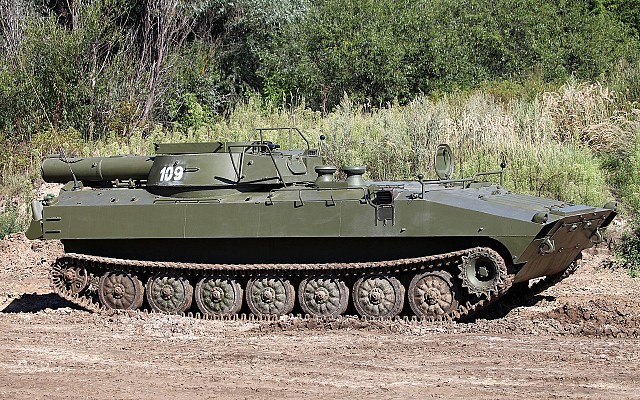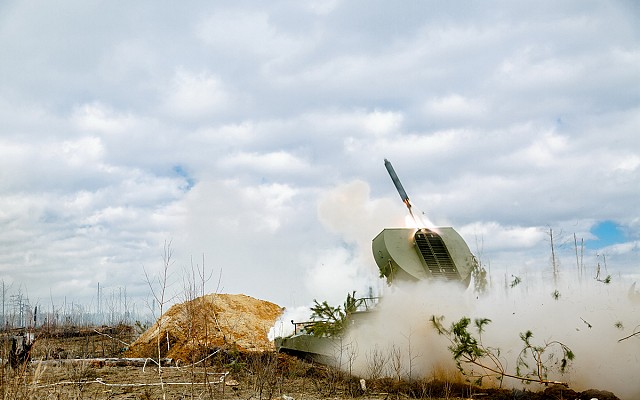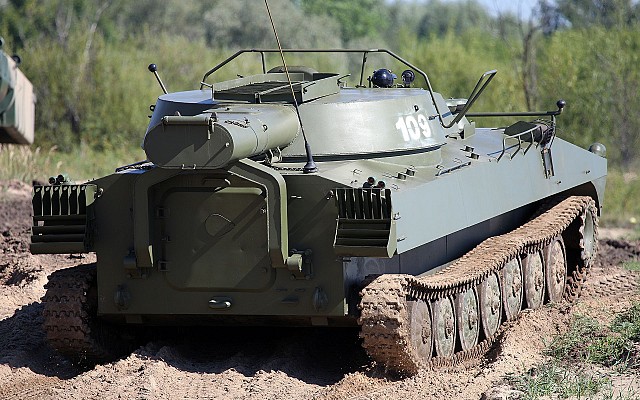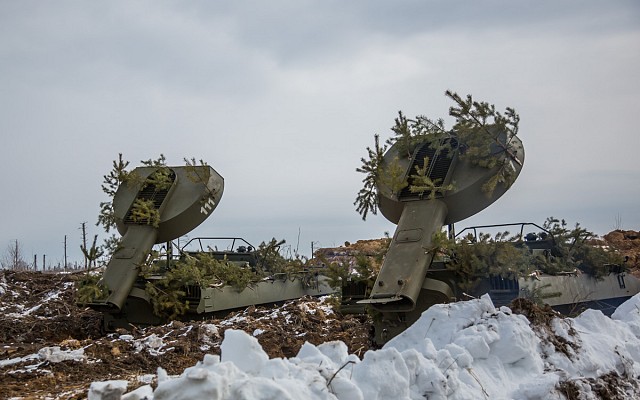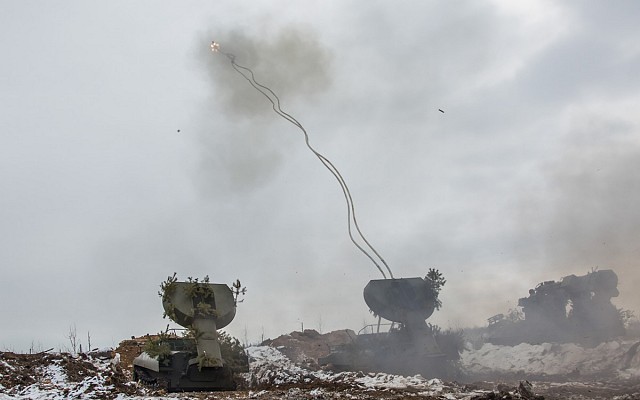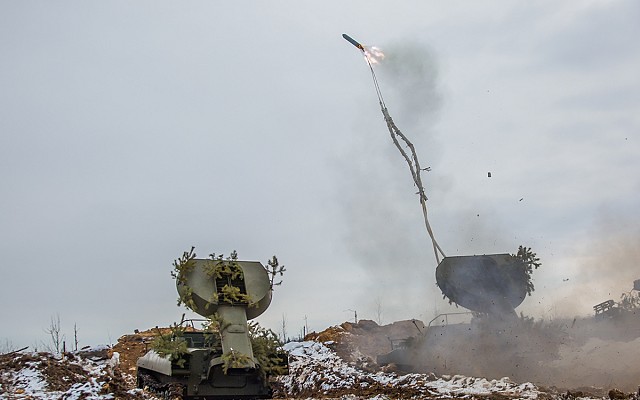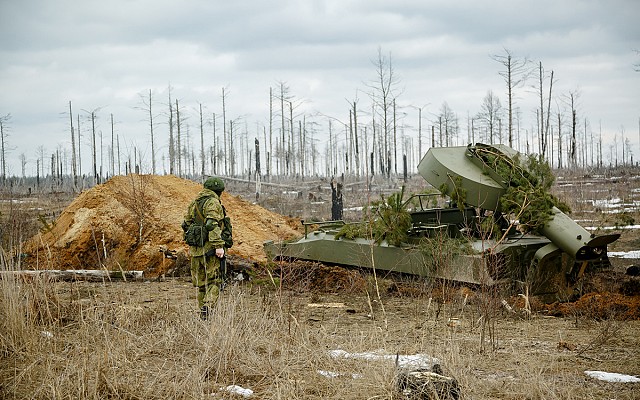UR-77 Meteorit
Overview
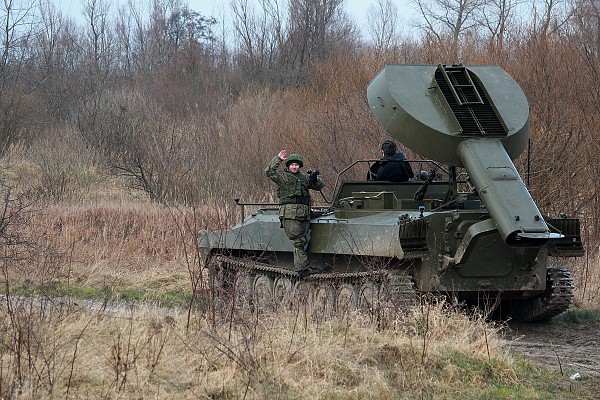
UR-77 Meteorit
UR-77 Meteorit with launcher in raised position.
Source: www.mil.ru -
© GNU Attribution Share Alike license
Russian for "mine clearance system"
Meteorit (nickname)
Russian for "meteorite"
Russia
Description
Introduction
The UR-77 is a mine warfare vehicle of Soviet origin. It was developed in the 1970's to help engineers create paths through a minefield quickly. The main role is to maintain the momentum of armored and mechanized forces during an offensive.
Design
The UR-77 is based on the tracked chassis of the 2S1 Gvozdika self-propelled howitzer. This chassis in turn is based on the MT-LB multipurpose tracked carrier. The UR-77 has a roof mounted launcher for two line charges. These are launched by rocket over a minefield and filled with explosives. The overpressure of their explosion detonates many types of mines, and dislodges unaffected mines.
Firepower
The UR-77 operates near the frontline, but is not intended to participate in combat. Mechanized forces and artillery are to provide cover fire when operating near enemy positions. UR-77 clears a 6 meter wide corridor which is 90 meters long using one of its two line charges. In Syria and Ukraine the UR-77 has reportedly been used in urban terrain.
Protection
The UR-77 is operated from under armor protection. The steel armor protects the crew from small arms fire and shell splinters. Although intended to operate near minefields, the UR-77 does not feature protection against mines.
Mobility
The tracked chassis provides good all terrain mobility. This allows the UR-77 to keep up with mechanized forces. The 300 hp V8 diesel engine allows for a maximum road speed of 60 km/h. The UR-77 is amphibious and can traverse calm water at a rather low speed of 4 km/h.
Users
In Soviet service the UR-77 supplemented, and eventually replaced, the earlier UR-67. UR-77 was exported in limited numbers. The UR-77 remains in Russian service today.
Details
Media
Related articles
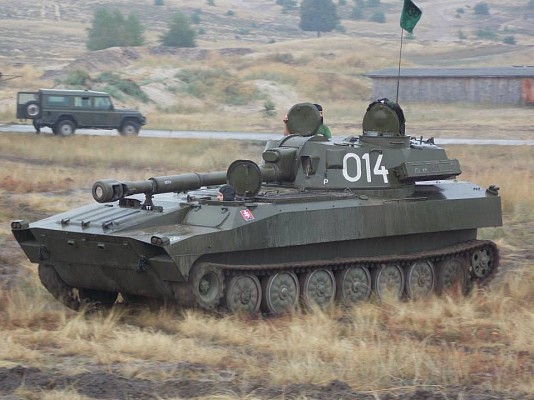
2S1 Gvozdika
The UR-77 is based on a modified 2S1 chassis. In turn the chassis of the 2S1 was derived from the MT-LB.
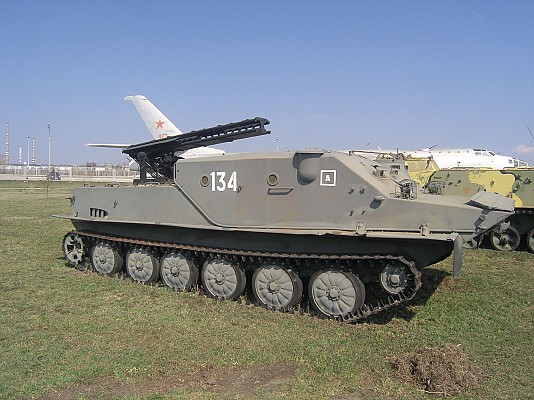
UR-67
Predecessor to the UR-77. Open frame two rail launcher on a BTR-50PK chassis.
